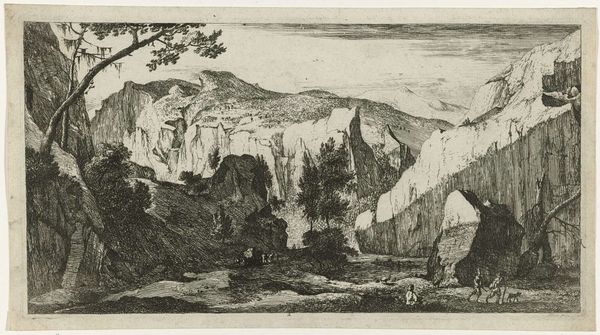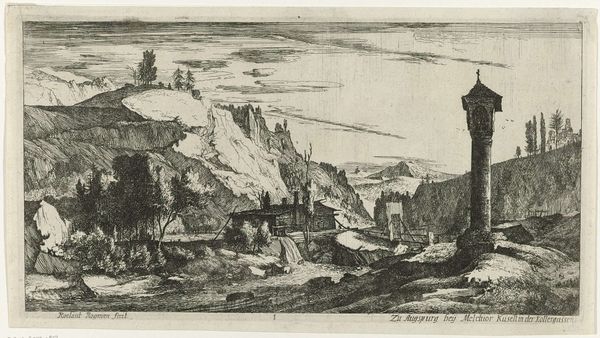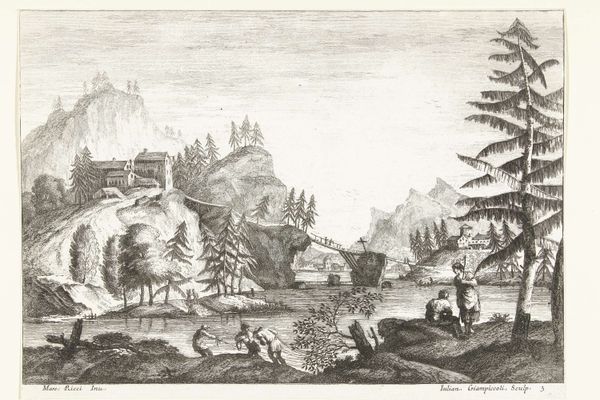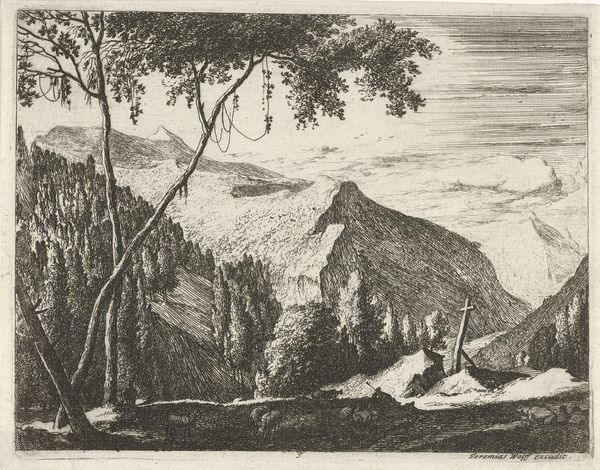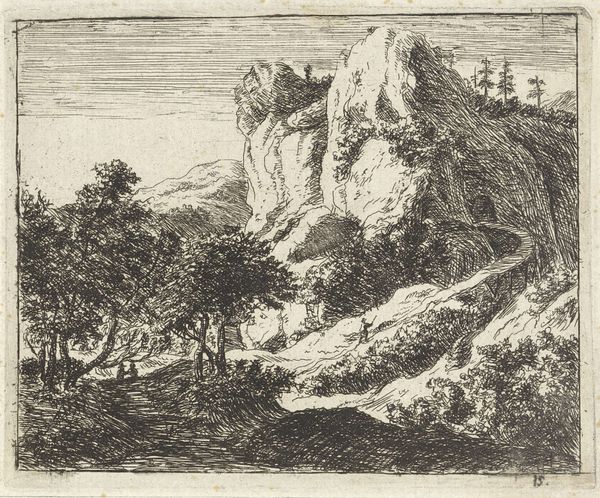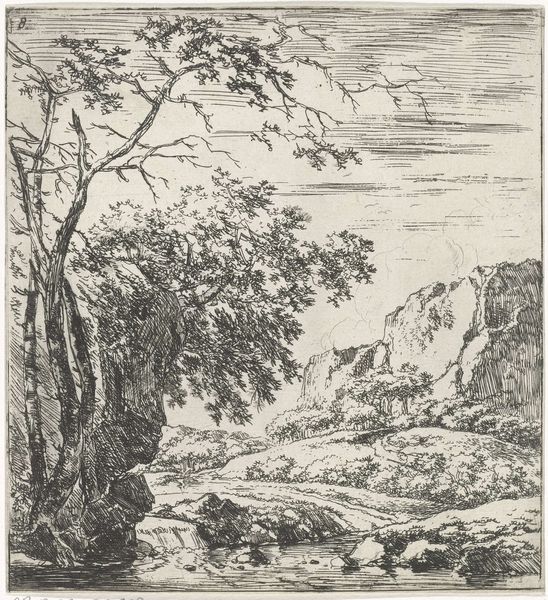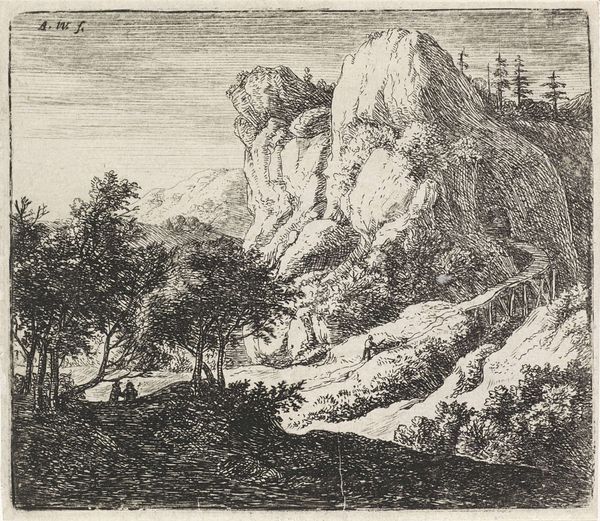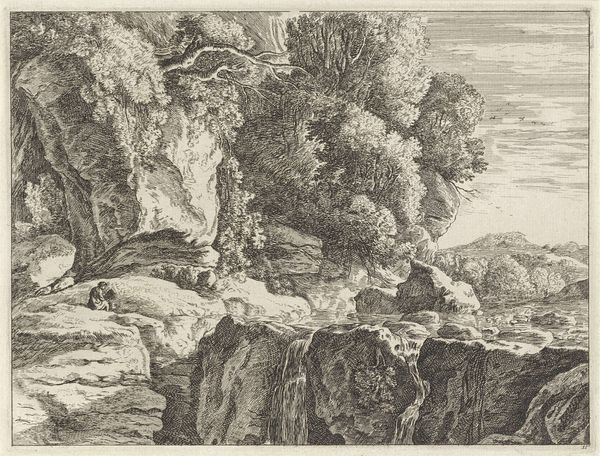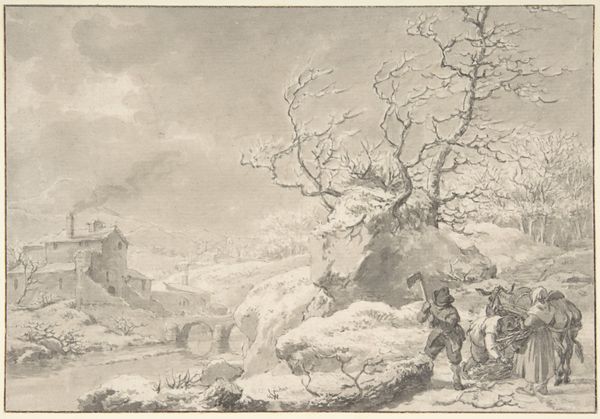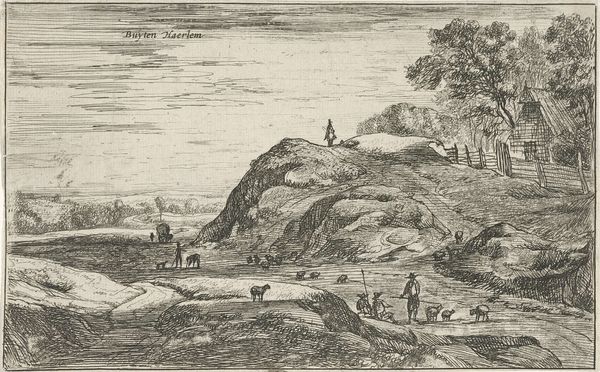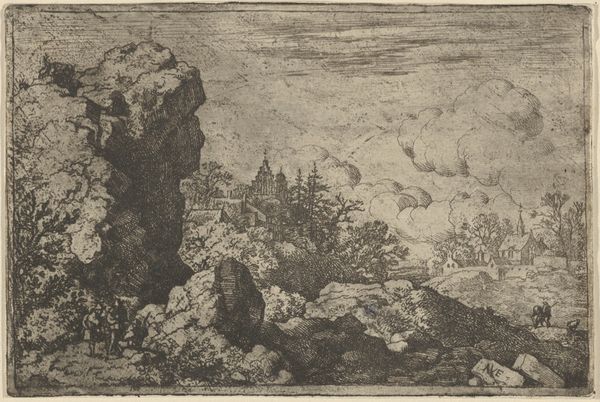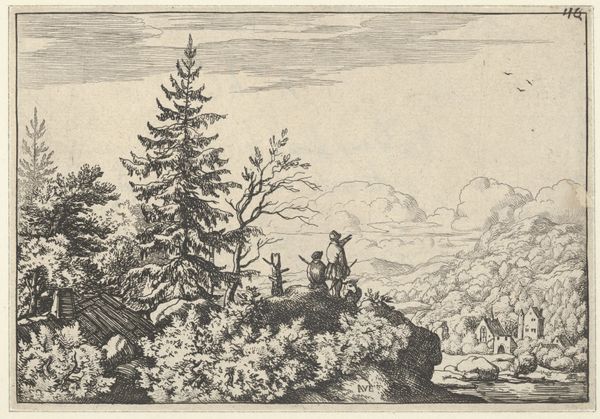
etching
#
baroque
#
etching
#
landscape
#
etching
Dimensions: height 131 mm, width 165 mm
Copyright: Rijks Museum: Open Domain
Curator: Let’s take a look at "Road in a Mountainous Landscape", an etching made sometime between 1673 and 1724 by Roelant Roghman, which we can find here at the Rijksmuseum. Editor: My goodness, that's… a lot of gray. And a very determined donkey, I might add. I feel as if I've walked right into a particularly stern charcoal sketch. Is it meant to be ominous? Or maybe just very Dutch? Curator: It’s interesting you say "Dutch," as it reveals our contemporary expectations for Dutch landscape painting. While the drama in "Road in a Mountainous Landscape" might be initially off-putting to some modern viewers, such scenery was familiar in Roghman's social environment. The work showcases an engagement with Baroque landscape traditions, but departs, for example, from golden age idyllic tendencies toward detailed realism and monumentality that evokes not a picturesque scene, but the grandeur and sublimity of nature. Editor: Sublimity indeed! I can almost feel the grit in my teeth just looking at it. I suppose the figures walking alongside those heavily-laden carts adds to that. Ordinary people moving with extraordinary determination across a challenging terrain. Does the fact it's an etching have a specific significance? Curator: Absolutely. Roghman primarily worked in etching and he achieved impressive tonal range by manipulating the technique itself. By controlling the depth and density of the etched lines, Roghman captured subtle nuances of light and texture to build a landscape teeming with life in an attempt to explore the complexities and contrasts between human presence and nature's overwhelming force, and that was part of Roghman's project, along with the picturesque tradition. Editor: He certainly succeeded. Though I confess I still want to add just a touch of bright blue sky! I understand the importance of context. I find myself drawn back to the figures; their journey feels almost metaphorical—carrying burdens, with just the open road ahead. Curator: Yes, and those figures contribute to a larger art historical and socio-political context, reminding us that artistic tastes are historically contingent. What’s popular in a landscape is rarely "just" about aesthetics. Editor: Thank you, I will keep that in mind. A journey, indeed, for me and for the audience today. Curator: My pleasure. I am confident our audience appreciates it as well!
Comments
No comments
Be the first to comment and join the conversation on the ultimate creative platform.
